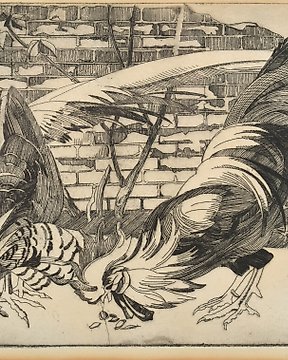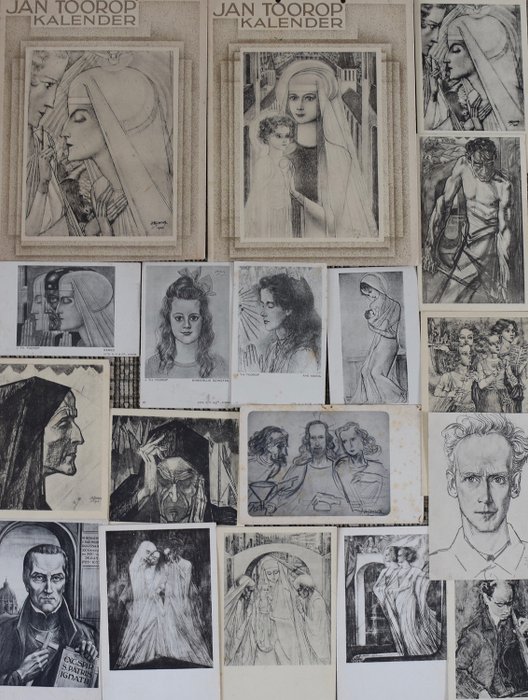
J.P. van den Berg (XIX) - Twee hanen
No. 27963445

No. 27963445

Large number of (18!) scenes by Jan Toorop featured on postcards, prayer cards calendar sheets from the early 20th century.
Two calendar sheets: dimensions 16 x 21 cm
4 prayer cards: dimensions 7 x 11 cm
Ave Maria, Madonna with infant, Childlike conscience, Prayer
12 postcards 9 x 14 cm
A number are published by publisher Vorst & Tas Amsterdam,
A number by v Munster's Uitg Mij A'dam and a number by Felix P. Abrahamson in the 1920s and 1930s.
Please see the photos for an accurate impression of this lot.
Furthermore view the photos for the numbers, the back also describes which drawing it is with the relevant title.
Johannes Theodorus (Jan) Toorop (1858-19280 was one of the most important Dutch visual artists from the period 1880-1910.
Initially, he painted in an impressionist style, but through the pointillist technique he developed into symbolist painter.
He was also active as a portrait draughtsman and he designed ceramics, advertising posters and book covers.
The Dutch art nouveau is often associated with his work.
In the last twenty years of his life he was strongly inspired by Roman Catholicism.
Is sent by registered post.
How to buy on Catawiki
1. Discover something special
2. Place the top bid
3. Make a secure payment